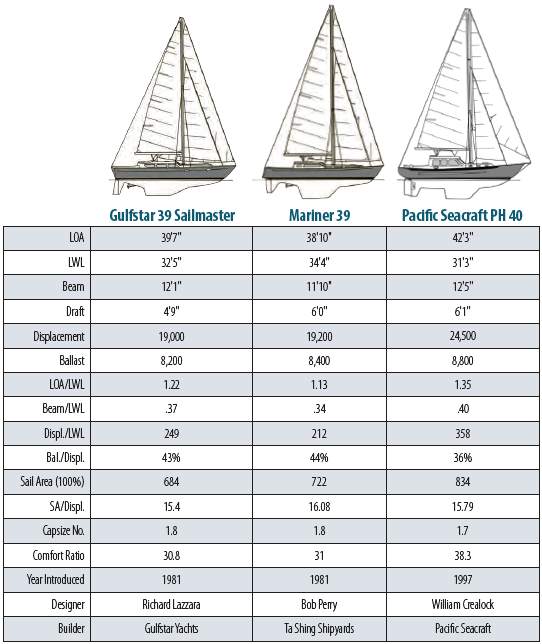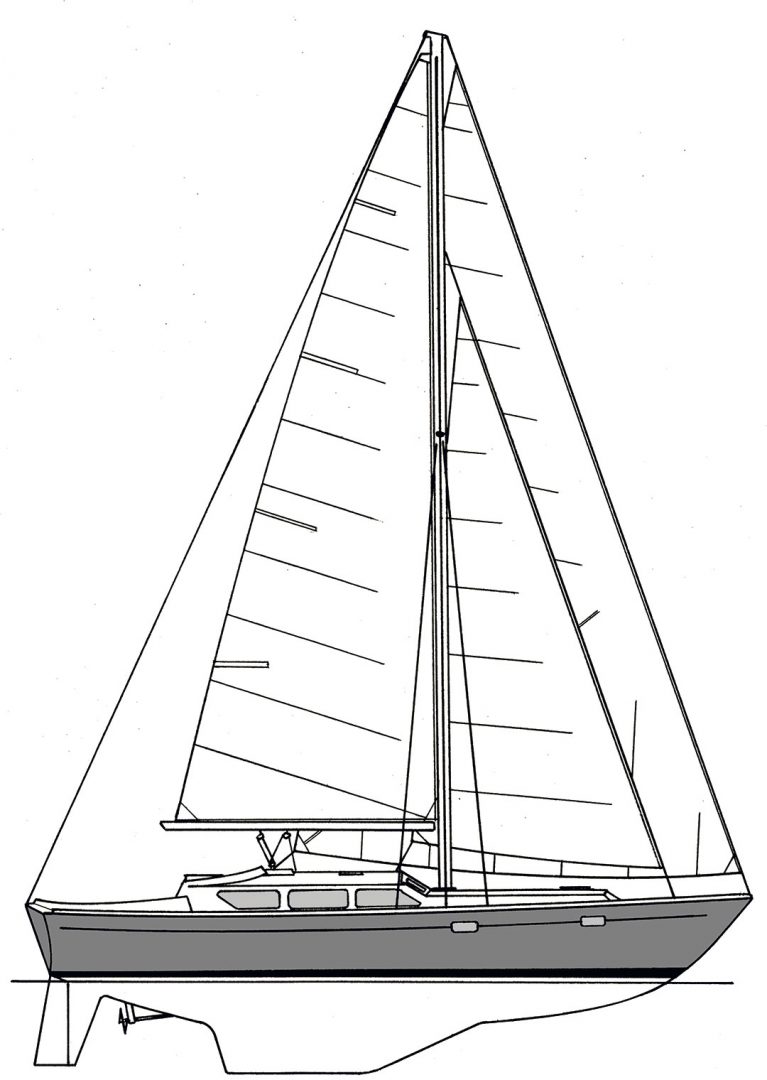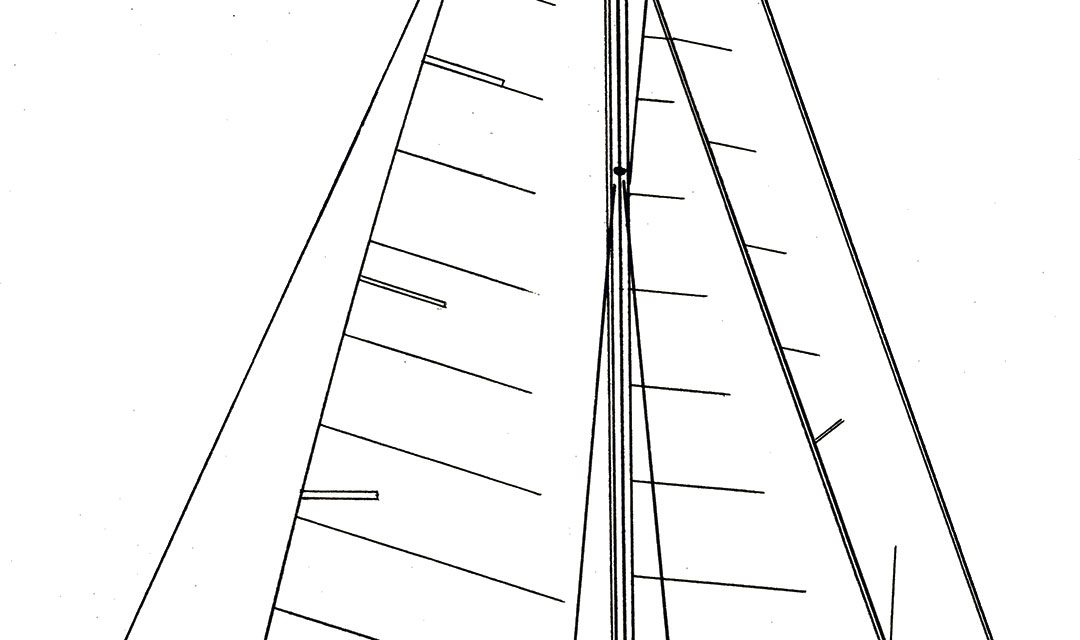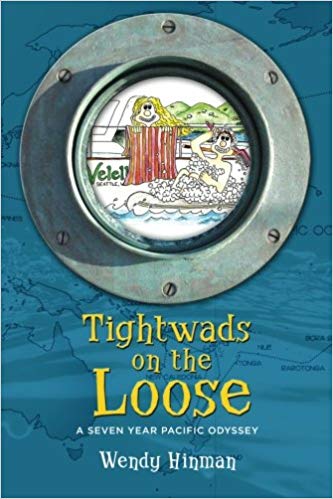
…and Two More Bright, Solid Cruising Performers
The late powerboat designer Tom Fexas once published a provocative article entitled “Sailing Is Silly” in which, among other digs at sailors and sailboats, he snarked that “the inhabitants of this vessel must live, eat, and sleep in a dark, narrow cave in the water.” These three boats attempt to address that criticism by raising the aft end of the house and the cabin sole to incorporate enlarged windows at sitting and eye level. Combined with the windows located forward in the raised house, these provide a nearly 360-degree vista and bring in far more light than in Fexas’ maligned caves.
When I worked at Hunter, we employed half of this concept in boats like the Legend 40.5 by raising the house aft (but not the sole) to allow more light below, while incorporating faux windshields at such a low angle that they were more like skylights. Raising the cabin sole also means that the cockpit and interior soles are closer to the same level, so you are not descending into Fexas’ cave as much, and the raised interior sole allows the placement of the engine in this more accessible and larger space.
 A modest increase in height at the aft end of the house, for better headroom in an aft galley more than anything else, used to be called a doghouse. The degree to which you go beyond the modest increase of the doghouse defines the difference between a raised-saloon configuration as in the Dick Lazzara-designed Gulfstar 39 and the Bob Perry designed Mariner 39, and a true pilothouse configuration in the later Bill Crealock-designed Pacific Seacraft Pilothouse (PH) 40.
A modest increase in height at the aft end of the house, for better headroom in an aft galley more than anything else, used to be called a doghouse. The degree to which you go beyond the modest increase of the doghouse defines the difference between a raised-saloon configuration as in the Dick Lazzara-designed Gulfstar 39 and the Bob Perry designed Mariner 39, and a true pilothouse configuration in the later Bill Crealock-designed Pacific Seacraft Pilothouse (PH) 40.
Interior steering also differentiates the raised-saloon from the pilothouse configuration. The Pacific Seacraft has a clever inside helm station that integrates with the chart table and the navigation area. Neither the Gulfstar nor the Mariner shows any option for an inside steering station. The raised house in both configurations impedes visibility from a cockpit helm station, but the taller pilothouse, of course, most of all.
All three of these boats incorporate modern underbodies of split keel and rudder, although each also incorporates a skeg-mounted rudder rather than a cantilevered spade rudder, reflecting a slight nod to cruising aspirations. Only the Pacific Seacraft, however, houses the propeller in an aperture in the skeg for increased protection.
When you look at the numbers, note that the Mariner 39 has a waterline length of 34 feet 4 inches, which is almost a full 2 feet longer than the Gulfstar and 3 feet longer than the Pacific Seacraft. I sometimes approach these numbers with some skepticism, knowing that artificially stretching the published waterline length produces a lower displacement/waterline length and enhances the aura of higher performance. This artificial increase is often achieved by including the skeg and even the rudder in this measurement. Just how fungible these numbers can be is evident when you learn that Bob Perry’s Mariner 39 started life as the Westsail 39, whose waterline length is listed at 36 feet 6 inches—almost 2 feet longer than the published value for Mariner 39, which is supposed to be exactly the same boat!
Using the waterline lengths of 32 feet 5 inches, 34 feet 4 inches, and 31 feet 3 inches against displacements of 19,000 pounds, 19,200 pounds, and 24,500 pounds, respectively, for the Gulfstar, Mariner, and Pacific Seacraft, we find a displacement/waterline length ratio of a competitive 249 for the Gulfstar, an even more competitive 212 for the Mariner, and a more conservative, (and expected) 358 for the Pacific Seacraft.
Each of these boats employs almost identical sail plans with two headsails on a masthead cutter rig with mid-boom sheeting. Sail area/displacement ratios are consistent and moderately conservative at 15.4 for the Gulfstar, 16.08 for the Mariner, and 15.79 for the Pacific Seacraft, the latter reflecting a larger sail plan with a bowsprit on a heavier displacement. The higher sail area/displacement ratio and lower displacement/waterline length ratio of the Mariner clearly ranks her as the more performance-oriented of the three designs. All three have acceptable capsize numbers and good comfort ratios.
The raised-saloon and pilothouse concepts certainly provide an interior that invites more use and creates distinctly non-cave-like comfort, especially on chilly or rainy days. However, there is nothing in the numbers to indicate that sailing performance will suffer accordingly.
Rob Mazza is a Good Old Boat contributing editor. He set out on his career as a naval architect in the late 1960s, when he began working for Cuthbertson & Cassian. He’s been familiar with good old boats from the time they were new, and had a hand in designing a good many of them.





